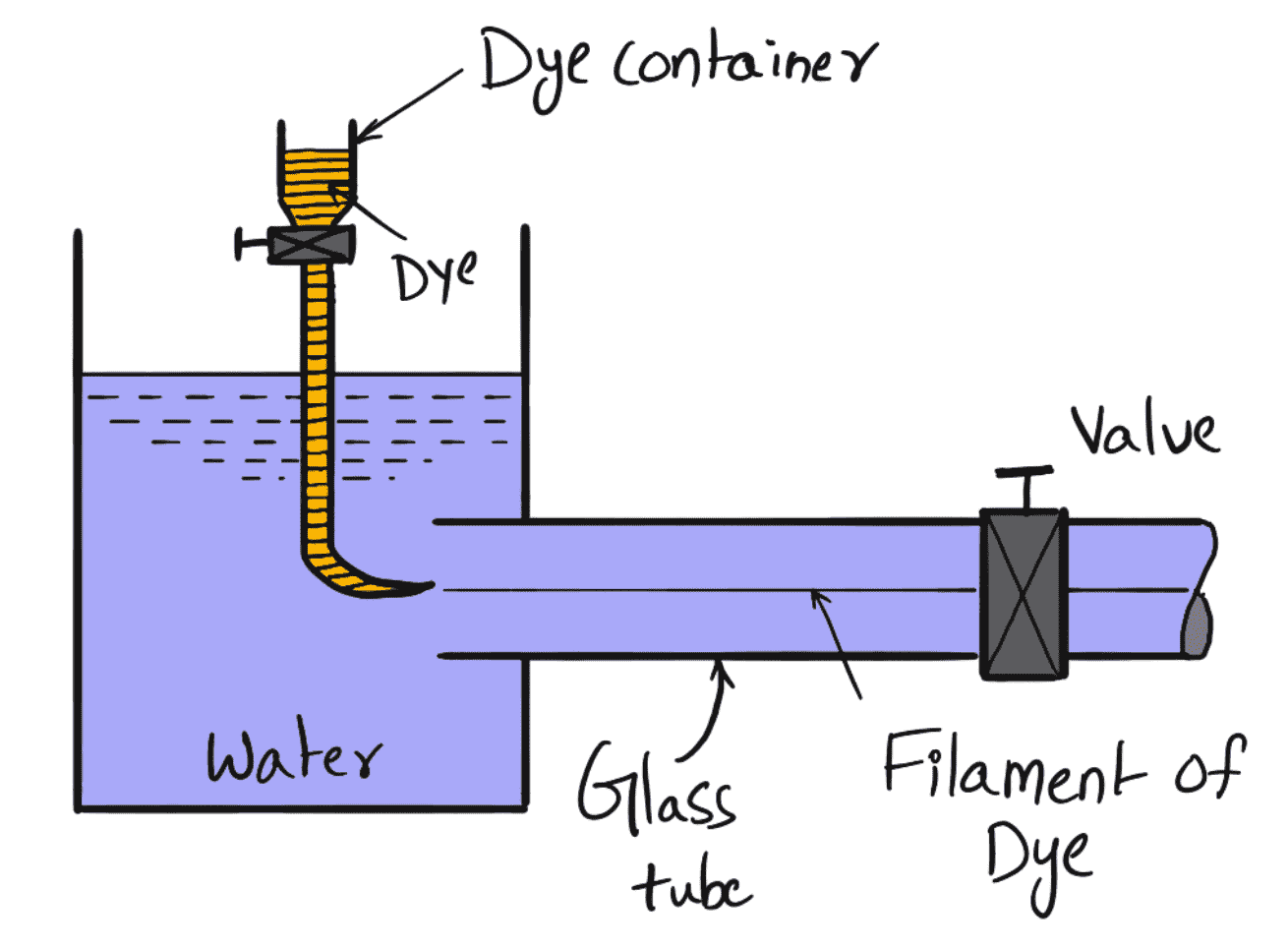In Fluid Dynamics, Reynold’s number helps us determine the flow type such as laminar or turbulent. In the previous articles, we have already seen how we can find Reynold’s number. This article will discuss how we can determine Reynold’s number by using Reynold’s Experiment.

Turbulent Flow
The laminar flow has been discussed in the previous article. In laminar flow, the fluid particles move along straight parallel paths in layers or laminae, such that the paths of individual fluid particles do not cross
those of neighbouring particles.
Laminar flow is possible only at low velocities and when the fluid is highly viscous. But when the velocity is increased or fluid is less viscous, the fluid particles do not move in straight paths. The fluid particles move in a random manner resulting in general mixing of the particles. This type of flow is called turbulent flow.
A laminar flow changes to turbulent flow for any one of the following conditions
(i) velocity is increased
(ii) diameter of a pipe is increased
(iii) the viscosity of the fluid is decreased.
Reynold’s Number
O. Reynold was the first to demonstrate that the transition from laminar to turbulent depends not only on the mean velocity but on the quantity.

This quantity is a dimensionless quantity and is called Reynold’s number.
In the case of a circular pipe, the following scenarios of Reynold’s number value can be useful to identify if the flow is Laminar or turbulent.
- If Re < 2000 the flow is said to be laminar
- If Re > 4000, the flow is said to be turbulent.
- If Re lies between 2000 to 4000, the flow changes from laminar to turbulent.
Reynold’s Experiment
From the above scenarios, we can determine the type of flow from Reynold’s number. Determining this Reynold’s number from an experimental setup is illustrated by O. Reynold in 1883.
Following is Reynold’s experiment that can help us determine Reynold’s Number.

The apparatus consists of the following parts.
- A tank containing water at a constant head
- A small tank containing some dye
- A glass tube has a bell-mouthed entrance at one end and a regulating value at the other end.
Procedure
The water from the tank was allowed to flow through the glass tube. The velocity of flow was varied by the regulating valve. A liquid dye having the same specific weight as the water was introduced into the glass tube as shown in the following figure.

Observations
The following observations were made by Reynold:
- When the velocity of flow was low, the dye filament in the glass tube was in the form of a straight line. This straight line of dye filament was parallel to the glass tube, which was the case of laminar flow as shown in the above figure (a)
- With the increase in velocity of flow, the dye filament was no longer a straight line but it became a wavy one as shown in figure (b). This shows that flow is no longer laminar.
- With further increase in velocity of flow, the wavy dye filament broke up and finally diffused in water as shown in Figure (c). This means that the fluid particles of the dye at this higher velocity are moving in a random fashion, which shows the case of turbulent flow.
Thus in the case of turbulent flow, the mixing of dye-filament and water is intense and flow is irregular, random and disorderly.
The loss of pressure head was found to be proportional to the velocity in the case of laminar flow. In the case of turbulent flow, Reynold observed that the loss of head is approximately proportional to the square of velocity.
More exactly the loss of head, hf ∝ Vn where n varies from 1.75 to 2.0.
Let us know what you think about this article in the comment section below.

Leave a Reply